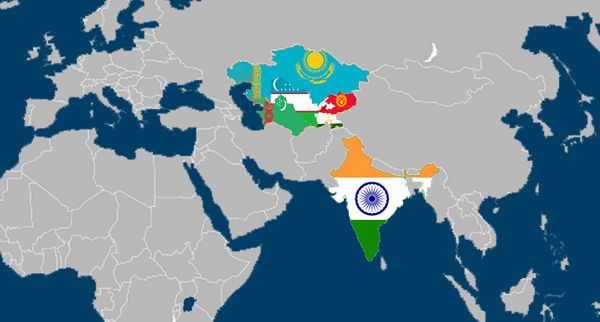- Courses
- GS Full Course 1 Year
- GS Full Course 2 Year
- GS Full Course 3 Year
- GS Full Course Till Selection
- MEP (Mains Enrichment Programme) Data, Facts
- Essay Target – 150+ Marks
- Online Program
- GS Recorded Course
- NCERT- First Ladder
- Polity
- Geography
- Economy
- Ancient, Medieval and Art & Culture AMAC
- Modern India, Post Independence & World History
- Environment
- Governance
- Science & Technology
- International Relations and Internal Security
- Disaster Management
- Ethics
- Current Affairs
- Indian Society and Social Issue
- CSAT
- 5 LAYERED ARJUNA Mentorship
- Public Administration Optional
- ABOUT US
- OUR TOPPERS
- TEST SERIES
- FREE STUDY MATERIAL
- VIDEOS
- CONTACT US
Strengthening Women’s Role in Green Enterprises
Strengthening Women’s Role in Green Enterprises

Why in the News?
- India aims to become a sustainable and developed nation by 2047, and supporting women in green businesses is key to this vision.
- Green businesses promote clean energy, reduce waste, and protect the environment.
- The 2025 Budget announced loans for SC and ST women entrepreneurs, which is a good start.
Key Highlights of the article:
- Focus on a Green Economy
- India is prioritizing the development of a green economy for a sustainable future.
- Green enterprises such as bio-packaging, e-waste recycling, and battery manufacturing offer vast potential.
|
Green Economy
|
- Role of Women in Green Economy:
- Women’s participation is essential for a sustainable green economy.
- However, they face significant barriers in starting and growing green businesses due to:
- Lack of finance
- Limited access to mentorship and training
- Financial bias and systemic discrimination
- Current Status of Women in Green Sectors
- Women lead only 18% of start-ups in 2024.
- Only 19.2% of engineers in India are women.
- 79% of women entrepreneurs are self-financed. Merely 1.1% access formal finance.
- Presence of a male co-founder improves creditworthiness, showing systemic bias.
- Government and Institutional Support
- Budget 2025:
- Term loans up to ₹2 crore for SC/ST/women entrepreneurs.
- It highlights the need for stronger efforts to empower women in this sector.
- NITI Aayog's Women Entrepreneurship Platform provides mentorship.
- Tata Steel’s ‘Women of Mettle’ scholarship supports women engineers in manufacturing.
- Training programs:
- BRICS Bootcamp
- IIM-Bangalore–Goldman Sachs partnership
- Budget 2025:
5. Recommendations for Empowerment
-
- Boards of banks and private investors should allocate dedicated funds for women-led green businesses.
- Expand scholarships and update engineering courses to attract more women.
Significance:
- Inclusive Growth: Women's participation in the green economy is essential for equitable growth.
- Climate Action: Women-led innovation can drive climate resilience and sustainable technologies.
- Economic Opportunity: Leveraging green entrepreneurship can enhance employment and economic growth, particularly in emerging sectors.
- India@2047 Vision: Essential to achieving sustainable development goals and becoming a developed economy.
|
Inclusive Growth:
|
Challenges:
- Gender bias in financing: Women are viewed as higher-risk borrowers due to reasons such as:
- Women often have less access to property or assets to use as collateral.
- Lenders stereotype women as less financially experienced or reliable.
- Social norms limit women’s business opportunities, increasing associated risk.
- Women in green sectors often lack mentors and role models to guide and inspire them.
- Low representation: Only 18% of start-ups are led by women (2024 data).
- Awareness gap: Women are unaware of or unable to access the government loan schemes due to:
- Complex application processes which discourage women from applying.
- Limited outreach and communication about schemes in rural or remote areas.
- Lack of digital access or literacy to use online resources effectively.
Way forward:
- Government should promote the fast growing economic sectors for women like Renewable energy (like solar and wind power), Battery making (used in electric vehicles), Recycling and reusing (circular economy), Engineered bamboo (used in construction and furniture).
- Women can explore fields like nanomaterials for better batteries.
- Ensure equal access to funding: Women should get equal chances of receiving loans without bias. This can be supported by launching women-focused loan schemes and training bank staff to avoid gender bias during loan approvals.
- Give better guidance: Use training programs and support from government and private groups to guide women entrepreneurs.
- Make schemes easy to understand: Simplify government loan and support processes so more women can use them.
- Involve big companies: Encourage large firms to offer scholarships and special support for women in green businesses.
|
Ensure IAS Mains Question: Q. Discuss the challenges faced by women entrepreneurs in India’s green economy and suggest measures to enhance their participation and empowerment. (150 Words |
|
Ensure IAS Prelims Question: Q. Consider the following statements regarding women’s participation in India’s green economy:
Which of the above statements is/are correct? Answer: b Explanation: Statement 1 is correct: As per 2024 data, women-led green start-ups form only 18%, showing underrepresentation. This reflects gender gaps in entrepreneurship, especially in sectors like renewable energy or e-waste recycling, where access to finance, training, and networks remains limited for women. It highlights the need for stronger gender-inclusive support systems. Statement 2 is incorrect Only 1.1% of women entrepreneurs access formal finance; 79% are self-financed. This shows a major financial barrier due to gender bias, lack of collateral, and limited awareness. Many lenders perceive women as higher-risk borrowers, restricting access to credit and affecting their ability to scale green businesses. Statement 3 is correct: The Union Budget 2025 introduced a provision for term loans up to ₹2 crore for SC/ST and women entrepreneurs. This move aims to promote inclusive growth and encourage more participation from women in green and other emerging sectors by easing financial constraints and supporting start-up ventures. |
|
Also Read |
|
UPSC Foundation Course |
|
| UPSC Monthly Magazine | CSAT Foundation Course |




